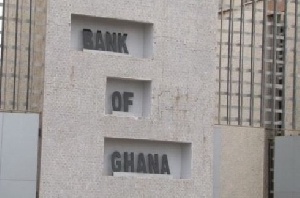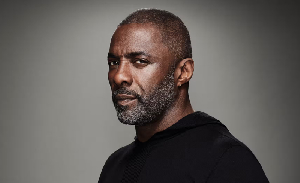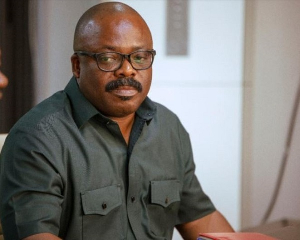As the Monitory Policy Committee of the central bank meets today, expectations of a policy rate cut are high, as the IMF programme appears to have impelled a modicum of prudence in macroeconomic management, with inflation and the cedi sliding less than it was feared when the year begun.
The MPC will either maintain the policy rate, which has been at 26percent since exactly a year ago, raise or decrease it. But a drop is the most expected outcome in view of the fairly stable macroeconomic environment.
GN Research, a member of Group Nduom, believes the policy rate is likely to go south for the first time in a year by at least 100 basis points due to several reasons, first among which is the fact that inflation has dropped to a more than two-year low of 15.8 percent in October 2016.
With the cedi gaining 3.8 percent and 4.12 percent against the British pound and Euro respectively, and with the expected rise in gross foreign assets, the research arm of Group Nduom expects the cedi to remain stable, even as consumers and businesses increase their demand for forex ahead of the elections and the yuletide.
“There is no better time to reduce the monetary policy rate by at least 100 basis points, than now. This is expected to lower lending rates and offer some respite to private businesses who need additional capital ahead of the festive season,” it said.
Finance Minister, Seth Terkper, is also hopeful of a policy rate cut, although he is careful not to spread through the central bank’s turf, saying: “They [MPC] have always taken the fiscal into account and one will assume that anything that improves the fiscal will ultimately impact positively on that decision. However, ultimately, it is a decision for the Central Bank to make.”
President Mahama recently told the private sector that with the help of the IMF programme, Ghana’s public debt management strategy has seen a consistent reduction of the public debt.
“We have come from a high of about 73 per cent of GDP to currently about 67 per cent and my indication is that this will continue to go down. One of the things we have done is to put a cap on commercial borrowing.
We have restricted commercial borrowing to US$500 million. I anticipate the public debt to continue to decline going forward and our intention is that we should have it down to about 40 percent of GDP by 2021,” he said.
For a whole year, the Central Bank has held the policy rate at 26 percent to tame inflation and mop up excess liquidity to support the local currency from a further slide.
Whilst the cedi has been fairly stable all year round, inflation, which rose to a peak of 19.2 per cent in March, has dropped to 15.8 percent in October, and President Mahama is even confident we could end the year at 14 percent.
The latest Annual Percentage Rates (APR) and Average Interests (AI) report released by the Bank of Ghana shows that the average minimum interest rates that can be charged on loans and advances by commercial banks in the country increased marginally between May and September this year from 27.5percent to 27.8percent.
Governor of BoG, Dr. Abdul-Nashiru Issahaku, has, himself, bemoaned the country’s high lending rates.
“It is a worry, and that is why we are working around the clock to bring down the rates. We will see the rate coming down if the disinflation process is consolidated and when inflation begins to come down substantially, of course it will pull down interest rate. And that is our mandate to bring down inflation,” he told the media recently.
Following the government’s raising of US$94.6 million at 6 percent a month ago, as well as a 10-year GHC438 million bond at 19 percent, all locally and for the first time, analysts and industrialists believe it is time for interest rates to start trending downwards, led by a fall in the policy rate.
Ekow Afedzie, Deputy Managing Director of the Ghana Stock Exchange (GSE), also argues that with the successful floatation of the 10-year bond which came at a relatively lower rate of interest, interest rates, generally, should start looking south.
“We believe that interest rates will trend downwards, and if they trend downwards, we are going to see the bond market picking up. Longer dated bonds are better for the economy at lower rates,” he said recently.
But not everyone believes that the economy’s management and government’s ability to issue bonds, are enough reason to see interest rates coming down in the short to medium term.
Ken Thompson, Managing Director of Dalex Finance, told the B&FT in an email response that: “I don’t see interest rates falling unless there is a significant increase in income or a reduction in public expenditure.”
The fact that government’s 10-year bond attracted bids below the short-term bills and bonds, is not enough to drive down interest rates, he said.
“Our expected oil revenues are small. Reducing public expenditure will be fiercely resisted by the Unions and will not deliver any benefits politically, at least in the short term,” he added.
Banking consultant, Nana Otuo Acheampong, has also ruled out a fall in the cost of borrowing by businesses in the medium to long term.
As long as short term instruments remain around 22-23 per cent and prime rate remains at 26 per cent, it is impossible for banks to bring down interest rates in the long term to 19 per cent or below for businesses, he said.
"The rate of 19percent that government got for the local bond is extremely high and will make it difficult for cost or interest on credit to businesses to come down."
Business News of Monday, 21 November 2016
Source: B&FT













